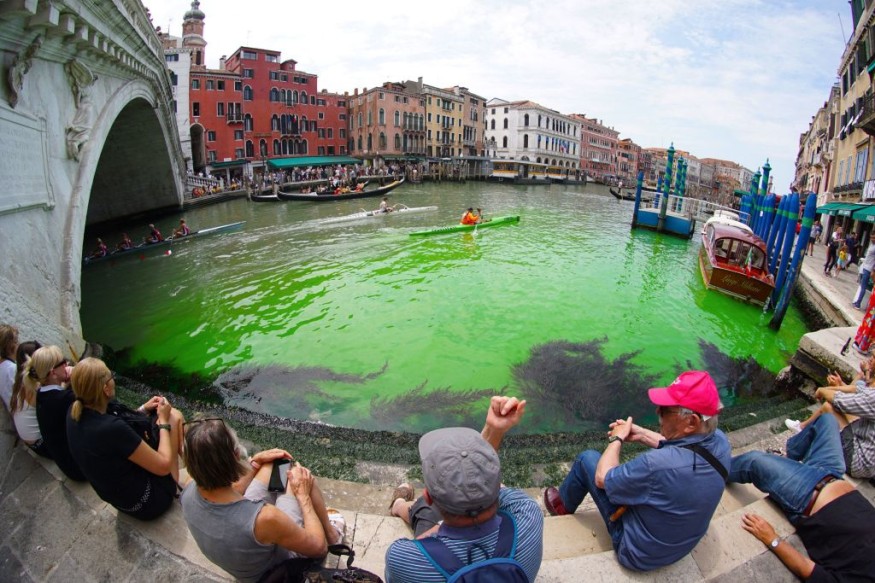
Authorities are looking into possible suspects-some say they could be protesters-who may have used fluorescein to color the Grand Canal in Venice.
The enigma of the material that altered the color of the water in Venice's canals has been largely solved by Italian officials after its mysterious emergence a few days ago.
Grand Canal Tinted with Non-Toxic Green Fluorescein
An investigation was started after a small section of Venice's famous Grand Canal turned shockingly green over the weekend. As stated by Veneto's governor Luca Zaia, samples taken by firefighters and examined by the regional environmental protection agency quickly indicated there was no pollution threat.
The examination of the water samples confirmed the presence of fluorescein, a non-toxic coloring chemical most frequently utilized in eye exams.
According to the local daily La Nuova Venezia, 250 grams of fluorescein are all that is required to achieve the effect witnessed on Sunday. Fluorescein is readily available online. A teaspoon can dissolve an excessive dose if the person pouring it does not immediately see the outcome.
Authorities are Investigating the Suspects
The individual or people that colored the waterways are still unknown to Italian authorities.
Locals, media outlets, and city officials all speculate that it might be a protest by environmentalists. According to city councilman Andrea Pegoraro, environmental activists are probably to blame for the recent attacks on Italian cultural heritage sites, CNN reports.
Ultima Generazione (Last Generation), one of these groups, denied involvement. The organization is well-known for attention-grabbing actions like painting a Botticelli picture black and dousing the Trevi Fountain in Rome with dilute charcoal to turn it black to urge Italian politicians to conserve and preserve the environment in the same way that they do art.
Two bare-chested campaigners covered themselves in the mud last week outside the Italian Senate to draw attention to the misery of Emilia Romagna, which has been devastated by devastating floods made worse by climate change.
According to the outlet, no organizations have as of yet claimed to be accountable for tinting the water on Sunday, according to People.
1968 Fluorescein Incident
Turning Venice's waters green with fluorescein as a form of environmental protest has happened before. The dye was first used on the Canal on June 19, 1968, by Argentine eco-artist Nicolás Garca Uriburu to color the Grand Canal waters of Venice.
According to the Metropolitan Museum of Art via Quartz, the purpose of the activity, which for one day changed the appearance of the Italian city, was to raise awareness of the interdependence of nature and society and to advance ecological consciousness as an essential component of culture.
Uriburu advanced this concept considerably in 1970, turning the Grand Canal in Venice, the Rio de la Plata in Buenos Aires, the Seine in Paris, and the East River in New York all green.
2016 Rio Olympic Pool Incident was Algae
However, during the 2016 Olympic Games, the pool water changed color from a beautiful blue to a marshy green due to an algal overgrowth brought on by the venue's high temperatures and lack of wind. One of the hypotheses put up for the Venice Canal color change also involved the presence of algae, however, the water tests finally ruled it out, Quartz reports.
Related Article : Pacific Ocean Turns Pink Off California Coasts for Scientific Experiment
© 2025 NatureWorldNews.com All rights reserved. Do not reproduce without permission.

